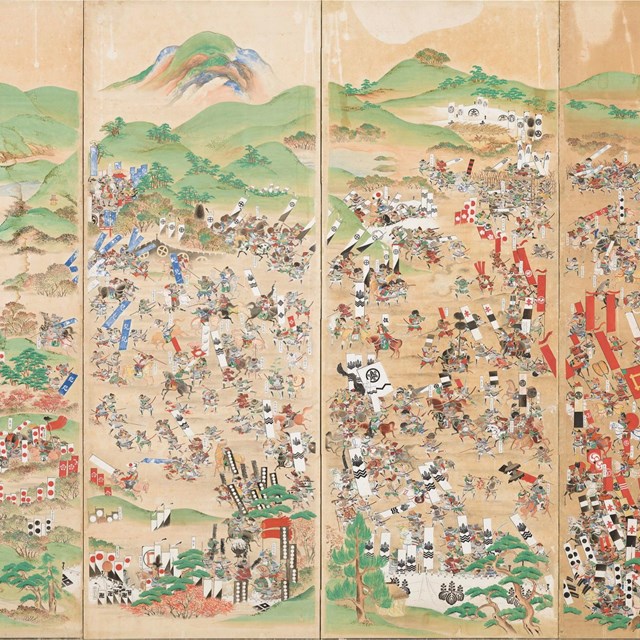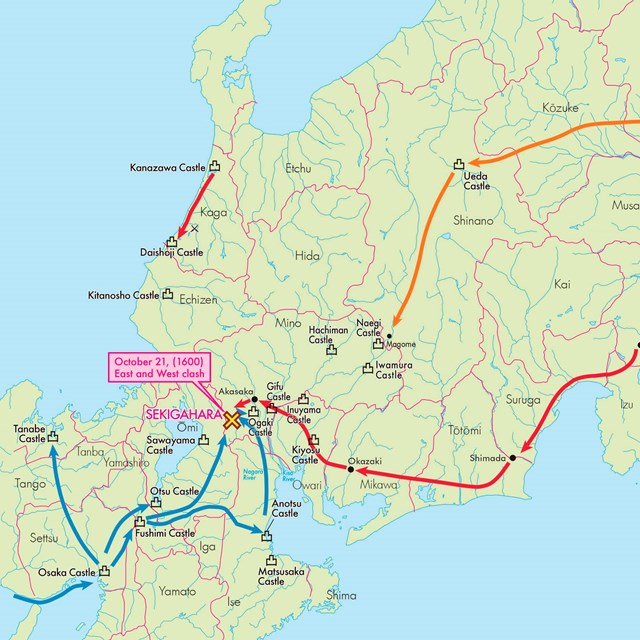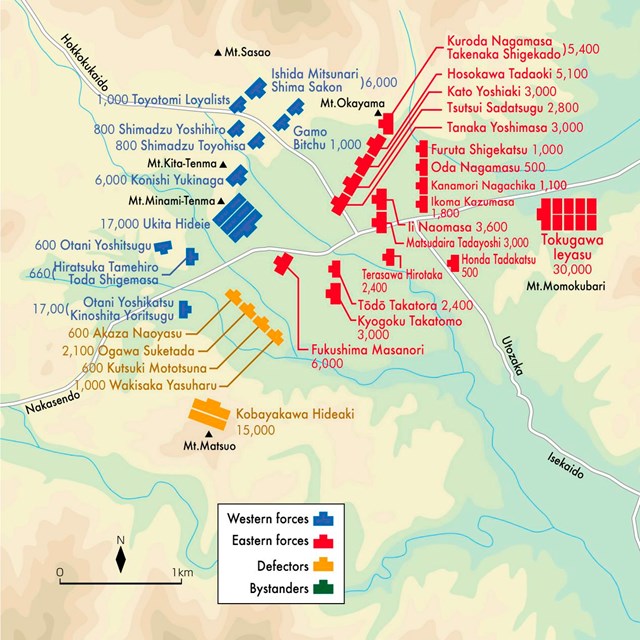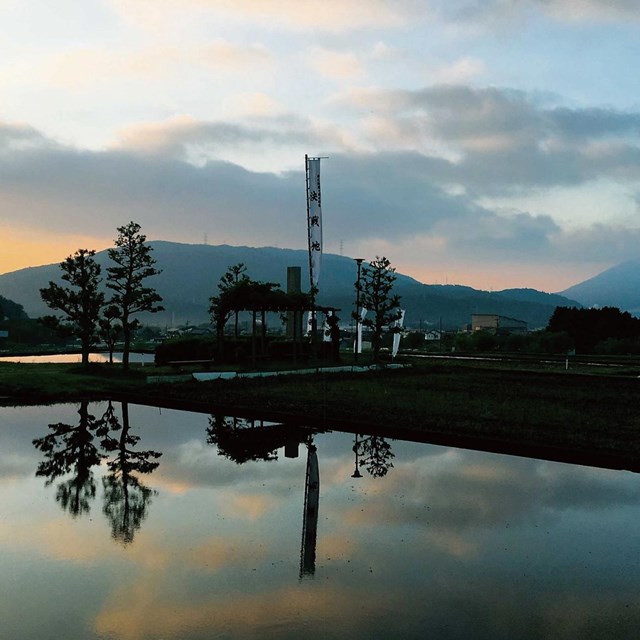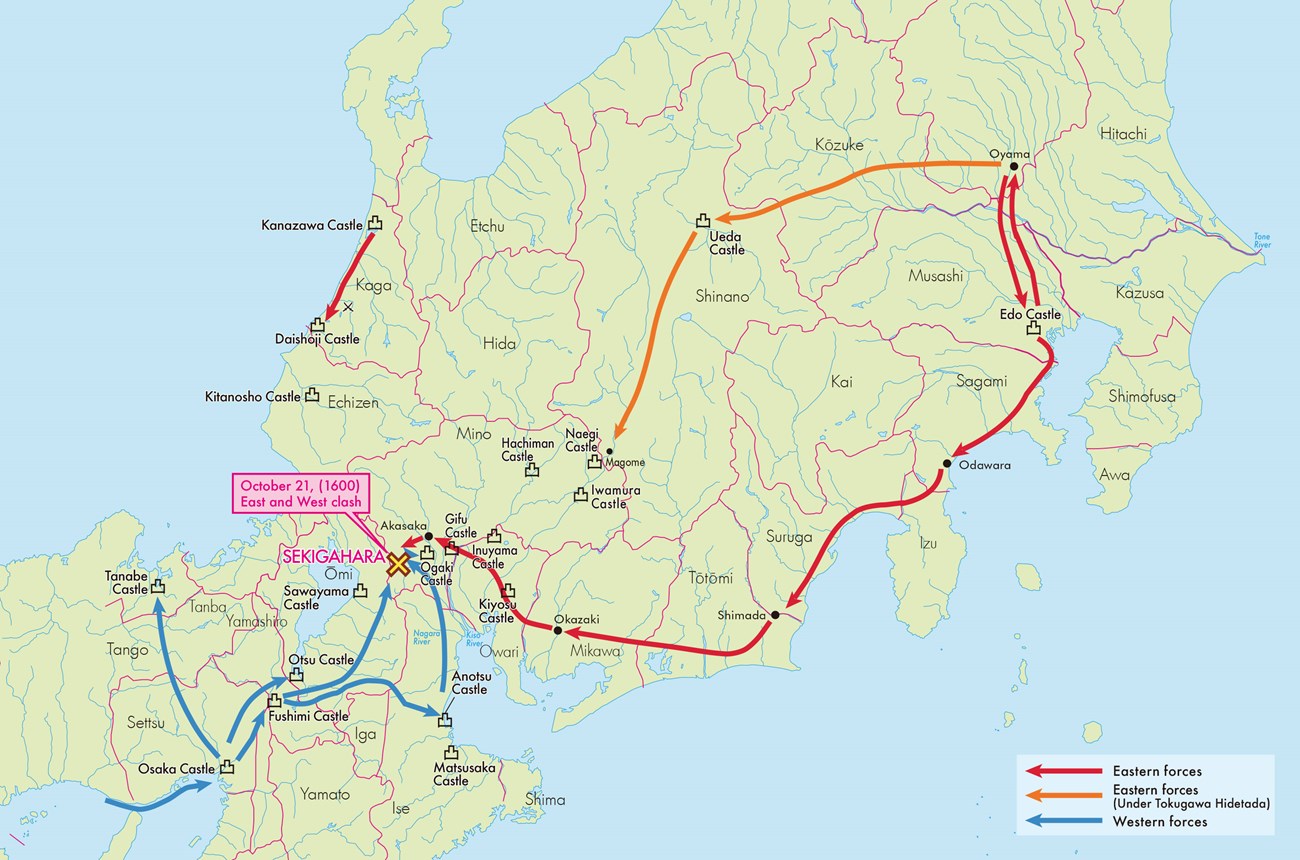
Gifu Sekigahara Battlefield Memorial Museum Shortly before the death of Toyotomi Hideyoshi in 1598, he entrusted temporary control of Japan to Five Regents –tairo - who were to rule until his young son Hideyori was old enough to succeed him as de facto ruler of Japan. Without wasting time, the most powerful of the tairo, Tokugawa Ieyasu, began to test the waters of the new power vacuum by seeing where the loyalties of the other daimyo lay. He arranged political marriages, despite the late Hideyoshi’s laws forbidding such action, and after the death of another tairo, Maeda Toshiie, he moved into Osaka castle, supposedly to act as the new caregiver for the young Hideyori. The other tairo and high-ranking politicians balked at Ieyasu’s actions, but they did not dare confront him militarily without forming a strong coalition of Toyotomi loyalists. Ishida Mitsunari, a close friend of the late Hideyoshi, decided to forge such an alliance to ensure that the young Hideyori would inherit his father’s office. The two men plotted against each other: securing alliances, offering daimyo rewards for loyalty, sending spies and assassins after each other, and biding their time for the ripe moment when they could finally decide the question of Japan’s true ruler once and for all. 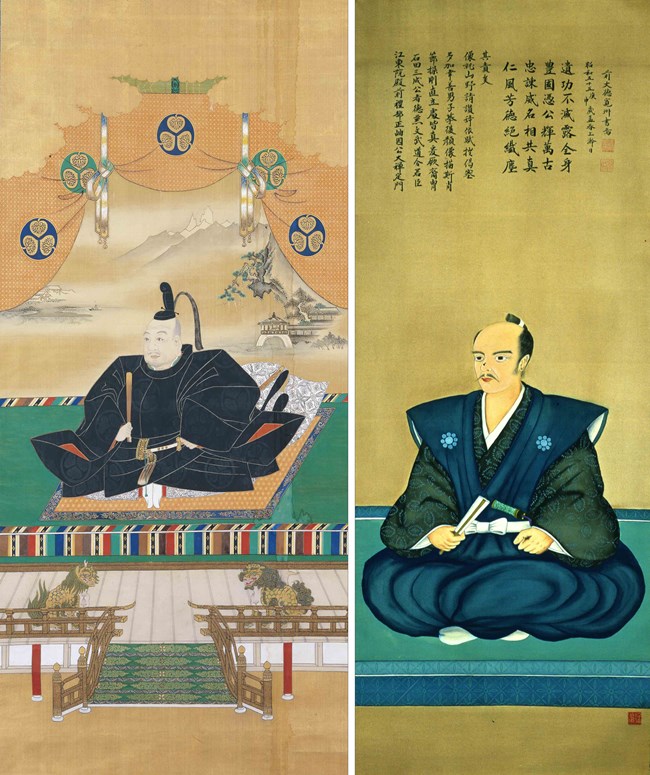
Gifu Sekigahara Battlefield Memorial Museum Image Indeed, Kagekatsu was acting in coordination with Mitsunari, who had become the leader of a coalition of daimyo and tairo loyal to the late Hideyoshi and hostile to the ambitious Ieyasu. Mitsunari hoped that by luring Ieyasu to the East, he would be able to surround him and destroy his army with Kagekatsu’s help. Ieyasu, however, anticipated such treachery. He sent his trusted generals off to prepare to hold Kagekatsu at bay and then set off towards Edo (modern Tokyo) at a more leisurely pace to prepare himself. Along the way, he met with his trusted retainer Torii Mototada at Fushimi castle, a strategically vital point along the Nakasendo Road which Ieyasu knew Mitsunari would target. There, knowing he would be horribly outnumbered, Mototada swore to sacrifice his own life in defending Fushimi to delay Mitsunari’s advance. Mototada’s sacrifice at Fushimi is one of the most famous examples of the samurai tradition in which loyalty to one’s lord outweighed one’s very life. On August 27, in the campaign against Ieyasu, who had reached Edo some weeks before, Mitsunari’s “Western Army” began the expected siege of Fushimi, which managed to hold out until September 6, when the few remaining samurai, including Mototada, committed seppuku (a form of Japanese ritual suicide by disembowelment). They had bought enough time for Ieyasu to prepare for the imminent confrontation between his “Eastern Army” and Mitsunari’s “Western Army.” 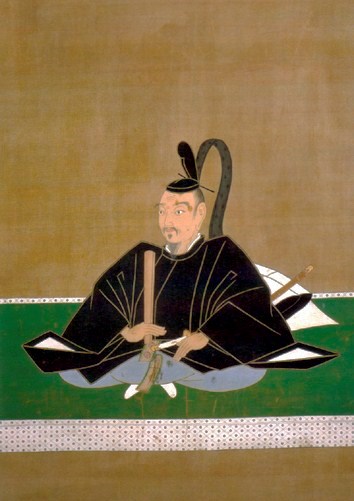
Public domain With Osaki Genba holding Kiyosu castle for his cause, Ieyasu sent a total of 36,000 men to the west and swiftly captured Gifu castle, sending its commander Oda Hidenobu, Nobunaga’s grandson, fleeing. Ieyasu himself began to march back to the west from Edo, eager to quash Mitsunari once and for all. Throughout late September and October, a series of sieges at places like Ueda and Otsu castles set the stage for the ultimate confrontation at Sekigahara. Tens of thousands of troops whose support could have changed the course of the battle found themselves cut off from the main body of their respective armies. On October 20, Ieyasu reunited with his split forces when he arrived along the Nakasendo near the Western Army’s headquarters at Ogaki castle. Mitsunari sent out a small contingent to test his Eastern foe’s strength and soon realized that his position in Ogaki was quite precarious. Ieyasu held forts on the major roads and could easily ignore Ogaki completely on his way back towards Osaka or his (Mitsunari’s) home base at Sawayama. As night fell that evening, Mitsunari consulted his generals for the best way to proceed. Shimazu Yoshihiro suggested a surprise nighttime assault while the Eastern Army slept. But Mitsunari was more persuaded by the words of his strategist Shima Sakon, who said that such an attack would be cowardly and dishonorable. Instead, Mitsunari decided to withdraw from Ogaki and meet up with Kobayakawa Hideaki, another one of his generals, to the west and cut off Ieyasu’s advance. There along the Nakasendo, near the village of Sekigahara, he would make his stand. Unbeknownst to Mitsunari, about a week before, Hideaki had sent a message to Ieyasu. In it, he promised that he would support him and his Eastern Army when the time came... Learn more about Sekigahara
|
Last updated: May 5, 2025

